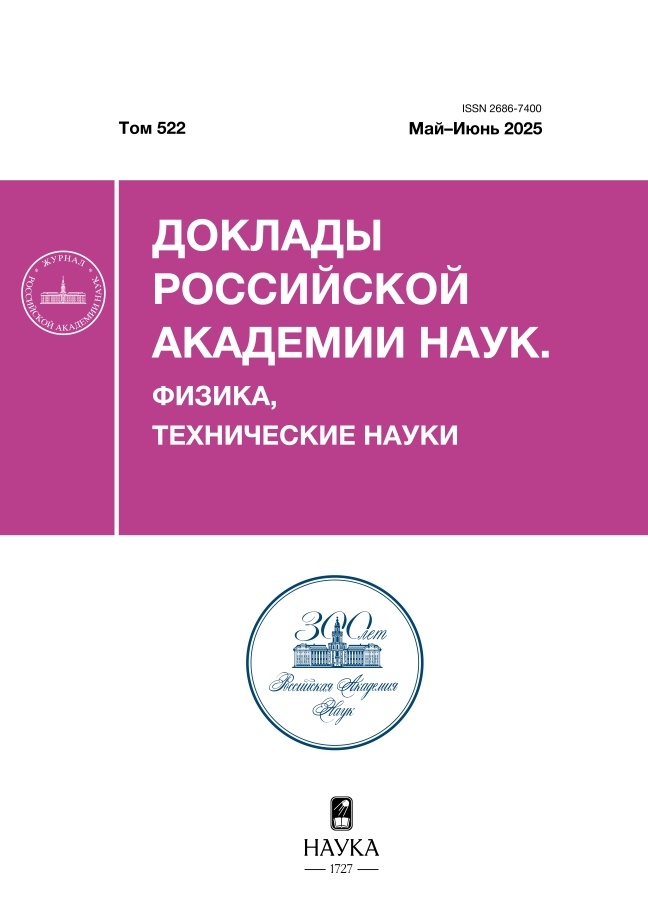Критерий начала ламинарно-турбулентного перехода в сжимаемом пограничном слое
- Авторы: Егоров И.В.1,2, Федоров А.В.2
-
Учреждения:
- Центральный аэрогидродинамический институт имени профессора Н.Е. Жуковского
- Московский физико-технический институт (национальный исследовательский университет)
- Выпуск: Том 522, № 1 (2025)
- Страницы: 45-50
- Раздел: МЕХАНИКА
- URL: https://modernonco.orscience.ru/2686-7400/article/view/689519
- DOI: https://doi.org/10.31857/S2686740025030077
- EDN: https://elibrary.ru/PVXMVG
- ID: 689519
Цитировать
Полный текст
Аннотация
Сформулирован критерий начала ламинарно-турбулентного перехода в пограничном слое сжимаемого газа на основе предположения Липманна, согласно которому критические условия достигаются там, где напряжение Рейнольдса становится равным напряжению вязкого трения невозмущенного течения. Сравнение с известными результатами прямого численного моделирования нестационарных возмущений, развивающихся в безградиентном пограничном слое на пластине и остром конусе под нулевым углом атаки, показало, что критерий хорошо работает в широком диапазоне местных чисел Маха (0 < Me < 7) для различных механизмов нелинейного распада волн неустойчивости.
Полный текст
Об авторах
И. В. Егоров
Центральный аэрогидродинамический институт имени профессора Н.Е. Жуковского; Московский физико-технический институт (национальный исследовательский университет)
Автор, ответственный за переписку.
Email: ivan.egorov@tsagi.ru
Член-корреспондент РАН
Россия, Жуковский, Московская обл.; Долгопрудный, Московская обл.А. В. Федоров
Московский физико-технический институт (национальный исследовательский университет)
Email: ivan.egorov@tsagi.ru
Россия, Долгопрудный, Московская обл.
Список литературы
- Morkovin M.V., Reshotko E., Herbert T. Transition in open flow systems: a reassessment // Bull. APS. 1994. V. 39. № 9. P. 1–31.
- Гапонов С.А., Маслов А.А. Развитие возмущений в сжимаемых потоках. Новосибирск: Наука, 1980. 143 c.
- Saric W.S., Reshotko E., Arnal D. Hypersonic laminar-Turbulent Transition // AGARD Advisory Report 319. Hypersonic Experimental and Computational Capability, Improvement and Validation. 1998. V. 2. P. 2-1–2-27.
- Fedorov A. Transition and Stability of High-Speed Boundary Layers // Annu. Rev. Fluid Mech. 2011. V. 43. P. 79–95.
- Hypersonic Boundary-Layer Transition Prediction // STO Technical Report TR-AVT-240. Aug. 2020.
- Cheng C., Chen X., Zhu W., Shyy W., Fu L. Progress in physical modeling of compressible wall-bounded turbulent flows // Acta Mech. Sin. 2024. V. 40. 323663.
- Zhong X., Wang X. Direct Numerical Simulation on the Receptivity, Instability, and Transition of Hypersonic Boundary Layers // Annu. Rev. Fluid Mech. 2012. V. 44. P. 527–561.
- Hefner J.N., Bushnell D.M. Application of Stability Theory to Laminar Flow Control // AIAA paper 79–1493. Jul. 1979. https://doi.org/10.2514/6.1979-1493
- Malik M.R. Boundary-layer transition prediction toolkit // AIAA paper 1997–1904. Jul. 1997. https://doi.org/10.2514/6.1997-1904
- Crouch J.D. Boundary-Layer Transition Prediction for Laminar Flow Control // AIAA paper 2015–2472. June 2015. https://doi.org/10.2514/6.2015-2472
- Mack L.M. Transition and laminar instability / NASA-CP-153203, Jet Propulsion Lab. Pasadena, Calif. May 15, 1977.
- Fedorov A.V. Applications of the Mack amplitude method to transition predictions in high-speed flows // NATO RTO-MP-AVT-200. 2012. P. 6-1–6-30.https://doi.org/10.14339/RTO-MP-AVT-200
- Fedorov A.V. Prediction and control of laminar-turbulent transition in high-speed boundary layer flows // Procedia IUTAM. 2015. V. 14. P. 3–14.
- Marineau E.C. Prediction Methodology for Second-Mode-Dominated Boundary-Layer Transition in Wind Tunnels // AIAA J. 2017. V. 55. № 2. P. 484–499.
- Marineau E.C., Grossir G., Wagner A., Leinemann M., Radespiel R., Tanno H., Chynoweth B.C., Schneider S.P., Wagnild R.M., Casper K.M. Analysis of Second-Mode Amplitudes on Sharp Cones in Hypersonic Wind Tunnels // J. Spacecr. Rockets. 2019. V. 56. № 2. P. 307–318. https://doi.org/10.2514/1.A34286
- Ustinov M.V. Progress in Development of Amplitude Method of Transition Prediction on Swept Wing // IUTAM Laminar Turbulent Transition. 9th IUTAM Symposium. London, UK. Sept 2–6. 2019. P. 71–83.
- Fedorov A.V., Kozlov M.V. Receptivity of High-Speed Boundary Layer to Solid Particulates // AIAA Paper 2011–3925. June 2011. https://doi.org/10.2514/6.2011-3925
- Borodulin V.I., Ivanov A.V., Kachanov Y.S., Crouch J.D., Ng L.L. Criteria of swept-wing boundary-layer transition and variable N-factor methods of transition prediction // International Conference on Methods of Aerophysical Research. June 30–July 6, 2014. Proc. / Ed. V.M. Fomin. Novosibirsk: Inst. Theor & Appl. Mech, 2014. Paper № 12. 10 p.
- Malik M.R., Li F., Choudhari M.M., Chang C.-L. Secondary instability of crossflow vortices and swept-wing boundary-layer transition // J. Fluid Mech. 1999. V. 399. P. 85–115.
- Liepmann H.W. Investigation of boundary layer transition on concave walls stability and transition on curved boundaries // NACA Wartime Report 4J28. Feb. 1945.
- Rist U., Fasel H. Direct numerical simulation of controlled transition in a flat-plate boundary layer // J. Fluid Mech. 1995. V. 298. P. 211–248.
- Zang T.A., Chang C.-L., Ng L.L. The transition prediction toolkit: LST, SIT, PSE, DNS, and LES // The Fifth Symposium on Numerical and Physical Aspects of Aerodynamic Flows. California State Univ. Jan. 1. 1992.
- Mayer C., von Terzi D., Fasel H. DNS of Complete Transition to Turbulence via Oblique Breakdown at Mach 3 // AIAA Paper 2008–4398. June 2008. https://doi.org/10.2514/6.2008-4398
- Sivasubramanian J., Fasel H. Direct Numerical Simulation of Controlled Transition In a Boundary Layer on a Sharp Cone at Mach 6 // AIAA Paper 2013–0263. Jan. 2013. https://doi.org/10.2514/6.2013-263
- Koevary C., Laible A., Mayer C., Fasel H. Numerical Simulations of Controlled Transition for a Circular Cone at Mach 8 // AIAA Paper 2010–4598. July 2010. https://doi.org/10.2514/6.2010-4598
- Fedorov A., Tumin A. The Mack’s amplitude method revisited // AIAA Paper 2021–0851. Jan. 2021. https://doi.org/10.2514/6.2021-0851
Дополнительные файлы











